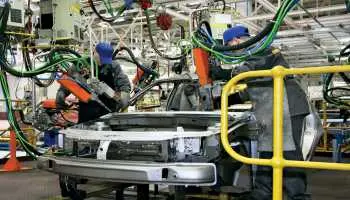
Asia Pacific Gas Cutting Machine Market Share, Trends, Revenue, CAGR Status, Business Challenges, Opportunities and Competitive Analysis 2023-2033: SPER Market Research
Category :
Equipment and Machinery
Published: Dec-2024
Author: SPER Analysis Team
Asia Pacific Gas Cutting Machine Market Share, Trends, Revenue, CAGR Status, Business Challenges, Opportunities and Competitive Analysis 2023-2033: SPER Market Research
Asia Pacific Gas Cutting Machine Market is projected to be worth 397.67 million by 2033 and is anticipated to surge at a CAGR of 4.65%.
Gas cutting machines are mechanical devices that heat and cut metal sheets and plates using gases, most commonly oxygen and a fuel gas such as acetylene, propane, or natural gas. The procedure entails preheating the metal to its ignition temperature before directing the oxygen flow to produce an exothermic reaction, which results in precise and efficient metal cutting. Gas cutting machines are widely used in industries such as manufacturing, automotive, construction, and shipbuilding.
Asia Pacific Gas Cutting Machine Market Driving Factors and Challenges
Driving Factors: The Asia Pacific region's gas cutting machine market is being driven by an increased emphasis on precision and customisation in manufacturing processes. Aerospace, automotive, and electronics industries all require very precise and complex cutting processes, which gas cutting machines excel at. The demand for personalized solutions that can meet unique project requirements has resulted in the development of specialist gas cutting machines that can handle complex designs and materials. Furthermore, the rising popularity of customized consumer items, which necessitate precision cutting and shaping, is driving up demand for modern gas cutting machines.
Request For Free Sample Report @ https://www.sperresearch.com/report-store/asia-pacific-gas-cutting-machine-market.aspx?sample=1
Challenges: The Asia Pacific region's strict safety and environmental laws present major obstacle to the market for gas cutting machines. Laws intended to ensure workplace safety and lower industrial emissions are being enforced more strictly by governments and regulatory agencies. Gas cutting operations, especially those that use acetylene and other conventional gases, can result in hazardous emissions and provide safety issues include exposure to poisonous fumes and fire threats. In order to comply with these rules, businesses frequently need to make investments in greater safety gear, training, and perhaps more costly ecologically friendly gas substitutes. Particularly for companies with limited resources, these specifications may raise operating expenses and make the deployment of gas cutting equipment more difficult.
Impact of COVID-19 on Asia Pacific Gas Cutting Machine Market
The COVID-19 epidemic caused temporary shutdowns in a number of businesses and interruptions in the global supply chain, which presented difficulties for the gas cutting machine market. But once sectors start up again and economies recover, the market should pick up speed again. Because businesses want to address pent-up demand and raise production, there will probably be a greater need for gas cutting machines.
Asia Pacific Gas Cutting Machine Market Key Players:
The competitive landscape, market segments, revenue analysis, and detailed examination of several prominent market players are provided in this market study, including ESAB, Haco Group, Ador Welding Limited, Colfax Corp, Esprit Automation Ltd, Hornet Cutting Systems, KALTENBACH GmbH + Co. KG, Koike Aronson Inc.
For More Information about this Report @ https://www.sperresearch.com/report-store/asia-pacific-gas-cutting-machine-market.aspx
Asia Pacific Gas Cutting Machine Market Segmentation:
By Product Type: Based on the Product Type, Asia Pacific Gas Cutting Machine Market is segmented as; In place gas cutting machine, Portable Gas Cutting Machine.
By Type of Fuel Gas Used: Based on the Type of Fuel Gas Used, Asia Pacific Gas Cutting Machine Market is segmented as; Acetylene, Propane, MAPP, Propylene, Natural gas.
By Type of Nozzle: Based on the Type of Nozzle, Asia Pacific Gas Cutting Machine Market is segmented as; Acetylene cutting nozzle, Liquified petroleum gas cutting nozzle, Lateral cutting nozzle.
By Application: Based on the Application, Asia Pacific Gas Cutting Machine Market is segmented as; Automotive, Aerospace and Defense, Industrial machinery and equipment, Shipbuilding.
By Region: This research also includes data for Australia, China, India, Japan, South Korea, Rest of Asia-Pacific.
This study also encompasses various drivers and restraining factors of this market for the forecast period. Various growth opportunities are also discussed in the report.
Would you like to view the sample pages?
Get Sample PagesExplore Related Reports
Domains Served
Our Global Clients
Our data-driven insights have influenced the strategy of 200+ reputed companies across the globe.




































